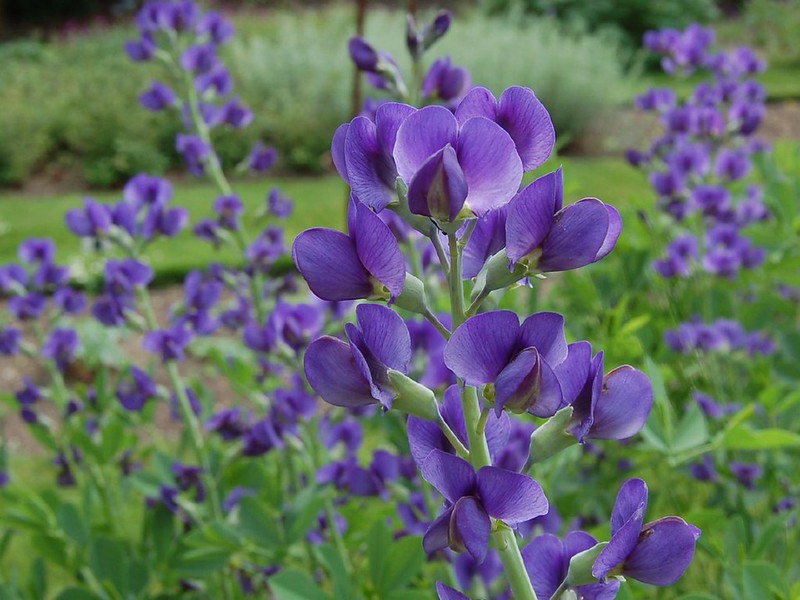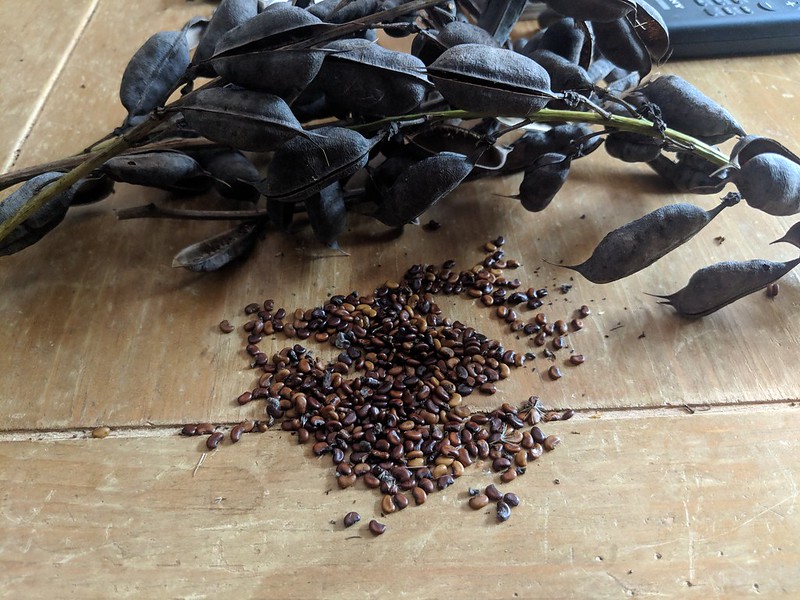By Susan Harkins
As the song goes, June is busting out all over! No month is kinder to Kentucky wildflowers than June. The delicate and often elusive ephemerals have given way to an abundance of rambunctious textures, colors, shapes, heights, and fragrances. If you love wildflowers, you have to love June. Maybe that’s why so many brides choose June—it’s all about the bouquet! A spectacular bouquet will include Baptisia australis. Regionally, you might know this species as wild blue indigo or false blue indigo.
There’s something magical and exotic about this flower—its structure is so different from what we usually see in our gardens. I expect to see fairies flitting about as the sun sets and the moon begins its climb into the night sky. I tell my grandchildren if they want to see fairies, that’s the flower to watch.

Tim Waters
Botany and wildlife
Baptisia is in the legume (Fabaceae) or pea family, which explains the bloom’s departure from the more familiar trumpet and ray flowers. In addition, Baptisia has both male and female flowers. The blooms mature from the bottom up, and the older female flowers produce lots of nectar. Blooms toward the top of the stalk are pollen-rich males.

A bumble bee travels to the preferred lower flowers, seeking their nectar prize. The bee grasps the female’s pistils and thrusts itself inside the bloom. Eventually, the bee makes its way up the stalk, reaching the male flowers. This same propelling action brushes the pollen-covered anthers across the bee’s abdomen. After reaching the top, the bee flies to the female flowers at the bottom of the next stalk, depositing its pollen onto the female pistils.
The blooms also attract butterflies and hummingbirds, and Baptisia is the only known host of the Wild Indigo Duskywing (Erynnis baptisiae) butterfly.
Another native Baptisia is Baptisia alba. It’s similar in every way to australis but its blooms are white. There’s a yellow variety, Baptisia sphaerocarpa, but it isn’t native to Kentucky.
Culture
When Mary Carol Cooper gave me my first Baptisia, she advised me to find a sunny spot and leave it there. They grow a long taproot and don’t like to have their roots disturbed. Besides, you might not be able to move it even if you decide to. Established plants resemble asparagus when they break ground in early spring but underneath, the roots are woody. I’d describe the roots as a steel octopus. Established Baptisia is almost impossible to dig up without superpowers.
They prefer fun sun but will tolerate a bit of shade. They’re very forgiving in their water needs, so go for sun first, then water. However, they need well-drained soil. Steer clear of high pH soils or amend the soil regularly if necessary. Baptisia blooms from April to July. If they stay small and the leaves are a bit yellow, pH might be your problem. They take a few years to produce volumes of blooms, but they are worth the wait.
Propagation
Given Baptisia’s rooting disposition, division isn’t a great method of propagation. Cuttings will root but few will sprout the next spring.

Seeds are the way to go. To collect, wait for the pod to turn brown or black. Blooms persist toward the top while pods ripen along the bottom. Fortunately, they hang on to the plant for weeks so they’re easy to find. Store dry seeds in the refrigerator. They’re easy to germinate and require only 10 days of cold moist stratification and then scarification in hot water. Plant about ½ inch deep.
Because Baptisia is a legume, it requires microorganisms that inhabit nodules on the plant’s root system. If you’re purchasing a healthy plant, don’t worry about it. You might never need to know this, but it can’t hurt to tuck away this bit of botanical trivia in your brain’s gardening section.
In your garden
In nature, you’ll find Baptisia along moist woodland edges and prairies. In your garden, give special care not to crowd them. They grow large and bushy so give them lots of room. The blooms are small, but the volume creates a showy vertical display. You might want to surround them with a bit of ground cover but don’t ask them to compete with another showy plant.
This bushy perennial grows from two to four feet from its woody base. While not a shrub, one plant can spread to three feet. One Baptisia is beautiful and three make a breathtaking display. However, in my opinion, a mass planting loses its visual impact because you see only the color and not the individual, and spectacular, plant.
Baptisia of any color provides both height and depth to any sunny garden spot. It’s spectacular as a focus spot or in a perennial border with other natives. After blooming, its blue-green foliage makes a nice backdrop for later bloomers and persists into cooler weather as do the dark seed pods.
When purchasing plants, look for older plants that are blooming; from seed, this plant takes three years (and patience) to produce flowers. Give Baptisia what it needs, and not only will it take center stage, but it will also be hearty—to the extent of being almost indestructible.
